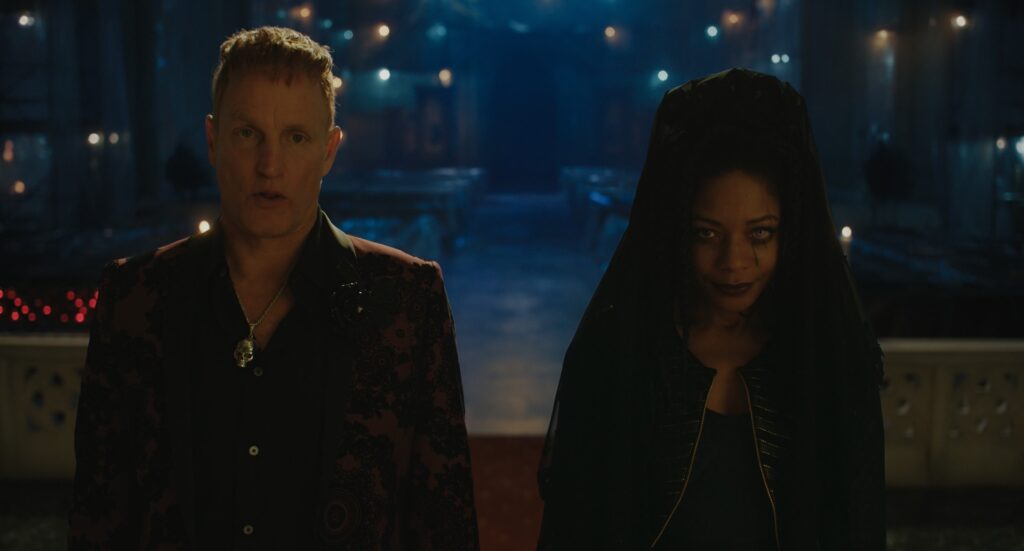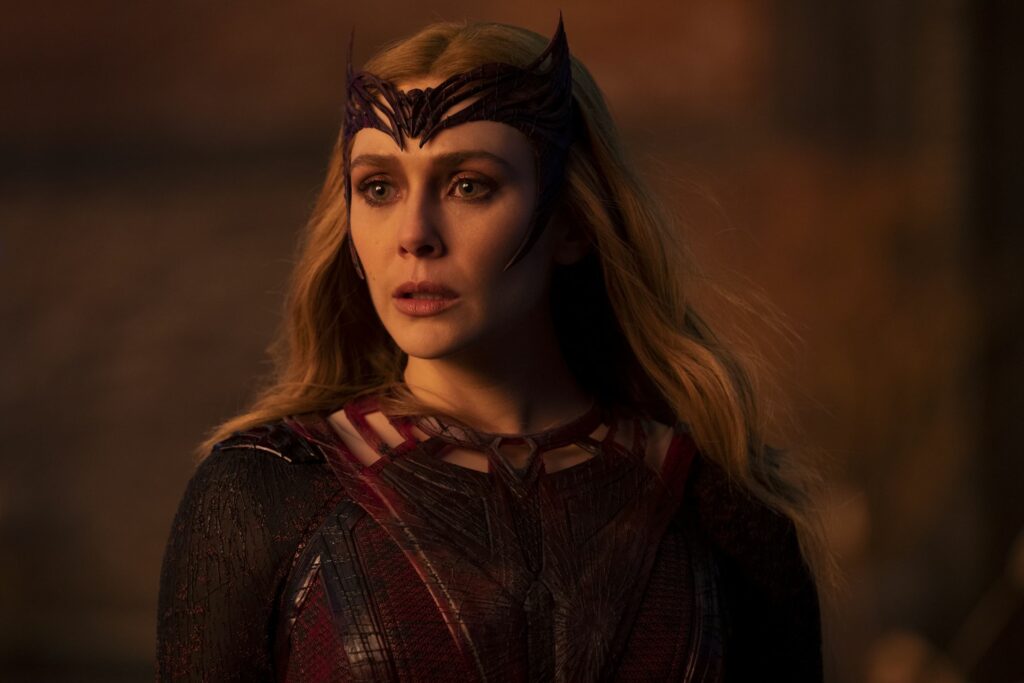The Sony Pictures Universe of Marvel Characters (or SPUMC, a candidate for the most uncomfortable-sounding acronym ever) is now in full swing. Since the ‘verse’s inception, two standalone, Spider-Man-less entries for Venom have been released, and the human vampire Morbius has received his own film. Critical reception has been mixed, but in spite of everything – most notably a global pandemic – these films are finding an audience. Until the release of Spider-Man: No Way Home last December, Venom: Let There Be Carnage was the highest grossing Marvel film of 2021.
However, all of the Sony-Marvel films released since Venom in 2018 present a fundamental issue. It concerns not the heroes of the stories, but rather their female compatriots, who too often feel like afterthoughts to the aggressively masculine, showstopper protagonists. In Venom, Venom: Let There Be Carnage, and Morbius, the women cast members are not given detailed, fleshed out characters of comparable depths to their male co-stars. Instead, they seem to exist purely as reverberations and reflections of the men in their worlds.

Consider Venom, a film that despite emerging as a critical misfire went down a storm at the box office. Anne Weying (Michelle Williams), the love interest of main character Eddie Brock (Tom Hardy), is little more than someone forced to suffer the consequences of Eddie’s recklessness. She loses her job, endangers her new relationship, and risks her life. Yet you aren’t supposed to care about these things in themselves. You care about them because they emphasise what a dirtbag Brock is being. What happens to her is merely a reflection of a male character’s shortcomings. Taken in isolation, they mean nothing.
Anne has her own life and career that Eddie feels entitled to rip up from underneath her. His vendetta against crazed billionaire scientist Carlton Drake (Riz Ahmed). When Brock claims that Anne works for Drake, she replies “I don’t work for Drake. I work for my firm, and my firm works for him. And I’m sure that they defend many people that you don’t deem worthy.” Her aspirations and livelihood are separate from Brock and Venom’s righteous ideals, and as such are seemingly of little consequence.
At one point, Anne has to take on the Venom symbiote herself to save Brock. Yet even her time as She-Venom is short-lived, not only robbing the film of much of its body-swapping comedy potential but emphasising how ultimately unimportant she is to the story – other than as a means to communicate and resolve Brock’s personal struggles. As a character in and of herself, the film ensures that Anne means next to nothing.

In Let There Be Carnage, Anne’s background role is even more exaggerated, in part due to there being more characters and a shorter run time than in the original. Her basic function in the film is unchanged, asides the fact that you see less of her. More screen time is instead given to Shriek (Naomie Harris), who not only feels secondary to much of the story, but is actually incompatible with its leading characters; Brock/Venom and new antagonist Cletus Kasady (Woody Harrelson). Shriek is Kasady’s teenage sweetheart, and he manages to rescue her once he is overcome by the Carnage symbiote. Problem is, a metahuman whose power involves literal shrieking and a creature which is reduced to a gooey puddle by loud noises is not a match made in heaven.
Shriek’s role in the film is one of unfulfilled potential, never given the space to unleash her full range of impressive abilities. In the comics, Shriek was part of a crowd that terrorised New York and even had a symbiote of her own, so her incompatibility with Carnage is clearly not pre-determined. Instead, Let There Be Carnage chooses to depict her and Kasady’s romance as one doomed to fail in spite of their love. The result is that Shriek, bullied into submission by the Carnage symbiote who threatens to kill her if she uses her powers, is just a shell of herself. She exists purely to capture Kasady and Carnage’s ultimate incompatibility; Kasady loves her, but Carnage despises her, and Shriek’s fate ties into the symbiote’s inability to bond fully with its host. Both Anne and Shriek are cast aside in favour of the macho bust-up between the male main characters, with their very existence being conditional on their relation to men.
Morbius, which was released last month, is the first of the new Sony-Marvel films to step away from Venom and introduce a new character, specifically the living vampire Michael Morbius. Morbius seeks the assistance of Martine Bancroft (Adria Arjona), who is also a doctor but is given no real backstory or characterisation – in other words, the film gives the audience no reason to really care about her beyond how she can help the hero of the story. Even her death serves little more than a perfunctory role, steeling and angering the human vampire enough to throw himself into the final fight.

Morbius first enlists her help to administer a new wonder cure for his rare blood disease, and then again when this predictably goes wrong and results in him turning into a superpowered monster. Outside of her relationship to the human vampire, she barely exists in the film, and her fate serves as little more than a crudely put together motivation for the main character. If anything, her purely instrumental role in the film is even more pronounced than in either of the Venom films. Morbius regularly dumps explanations of his powers onto her rather than actually demonstrating them and figuring it out for himself. Anne also has something like this role in Venom, but in Morbius Martine’s job as a soundboard for the human vampire’s self-discovery is even more blatant.
To have three films on the bounce relegating women to the background is grotesquely impressive. It also feels very dated; the best blockbuster films of today manage to place women into roles of comparable significance. It isn’t perfect no, but in the likes of Dune, The Matrix Resurrections, and the Marvel Cinematic Universe (MCU), women at least have a much larger role than as mere reflections of the men in their lives.
Since Wonder Woman, there has been a real push to have women play more central roles on the blockbuster scene. In 2016, women made up 29% of all film protagonists, compared to 41% in 2021. It is hardly an all-encompassing measurement, and one that leaves aside other factors such as ethnicity and age, but nevertheless it illustrates the growing space and role for women in cinema. The Sony-Marvel films are, in that sense, behind the times.
This begs the question: why are Sony doing this? Perhaps, with the main Marvel Universe now dominating the box office, they are trying to appeal to a different audience – a supposedly edgier, more mature audience. The hyper-masculine presentation of Venom, Carnage, and Morbius lends itself to a fanbase of young men who value “strength” and “power”. All the Sony-Marvel films have higher age ratings than their MCU counterparts, using bloodshed and profanity to try and mark themselves out as different. This kind of ploy doesn’t necessitate leaving women behind, yet it somehow seems to have happened anyway. It certainly doesn’t help that all three films leave something to be desired in the writing department, which certainly wouldn’t address the shortcomings in representing women but may at least make it harder to uncover.
It is worth mentioning that there is still time to improve. One of the next films in the Sony-Marvel universe is Madame Web, which is set for a release in July next year. S.J. Clarkson, who has previously directed episodes of Jessica Jones and The Defenders, will be the franchise’s first woman director, and Dakota Johnson has been cast in the lead role. Often depicted as an ally and mentor of Spider-Man, this will be the first film in the series to be fronted by a female character, so by necessity you would think that the problem of women being given inconsequential roles will be resolved. Also in the works is the franchise’s first TV spin-off, which will focus on the superhero Silk. A Korean-American superhero, she is the alter-ego of Cindy Moon, who appears as one of Peter Parker’s classmates in the MCU and is played by Tiffany Espensen. Whether Espensen will return for the show is unclear, but it is encouraging to see the franchise moving towards having more women in leading roles – both in front of and behind the camera.

Speaking of which, the MCU arguably does at least as bad a job, in spite of all its woman protagonists. Scarlett Johansson‘s criticisms of how her take on Black Widow was basically reduced to eye candy in Iron Man 2 is old news by now, a base error that Marvel have since put right by giving her a more detailed history and her own solo outing. Doctor Strange in the Multiverse of Madness undoes all the great work put into Wanda Maximoff’s character in WandaVision in favour of a hysterical, uncontrollable female cliché of a villain. And in Moon Knight, May Calamawy has talked about how she worried about her character feeling increasingly insignificant as the series went on – although has also said that co-stars Oscar Isaac and Ethan Hawke did everything they could to make sure that didn’t happen. The MCU has done some vital work in empowering women on the big screen, but that doesn’t mean that it has avoided some of the same mistakes that now plague Sony’s latest additions to the superhero mass market.
Despite some encouraging signs for the future, and hardly being alone in deserving criticism, the Sony-Marvel movies to date have still been reluctant to engage properly with its female characters, almost as if they risk ruining the show by taking attention off the protagonists. This reluctance creates to films that come up short in detail, writing and frankly, enjoyment. As the Sony-Marvel series of films is allowed to grow and expand, hopefully this unhelpful trend can be bucked once and for all.
